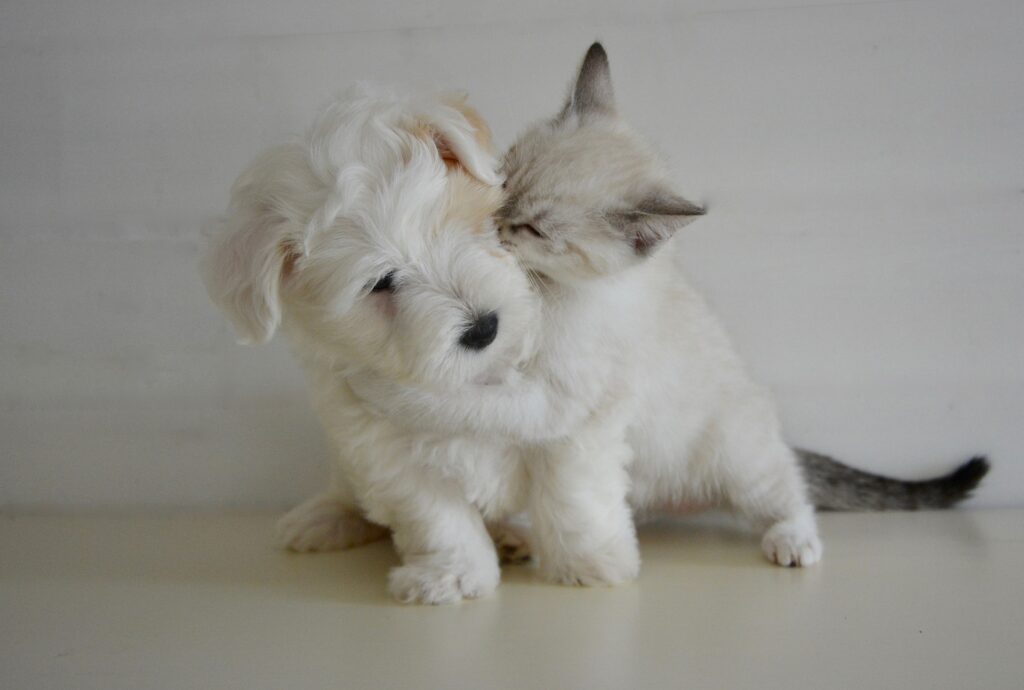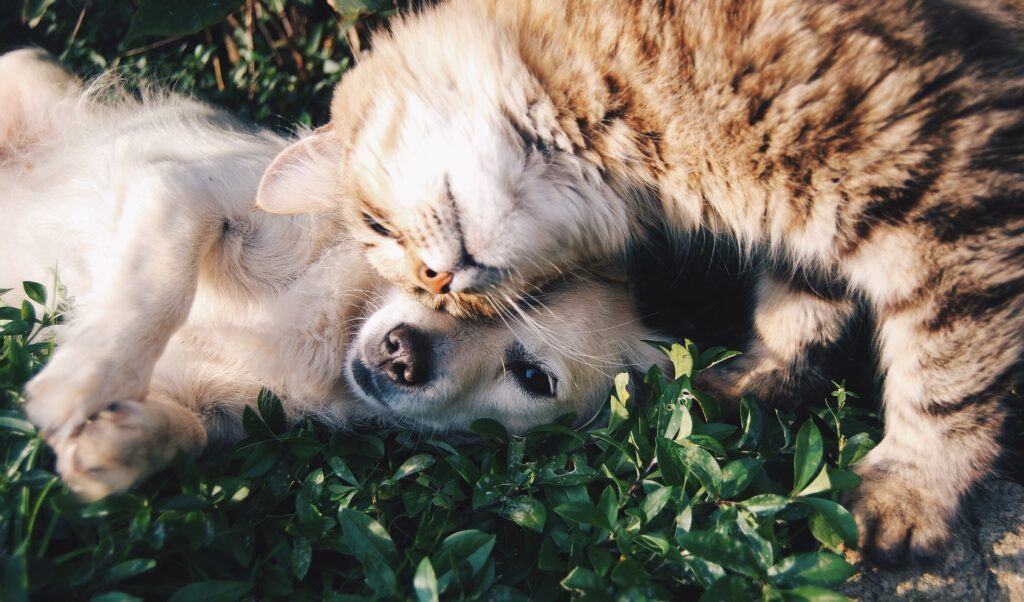Cats and dogs are the most popular pets across the UK. We just love having a furry, four-legged friend around to keep us company and cheer us up when we’re down. They’re just like adorable little children that are significantly less demanding and don’t answer back – so, ideal really!
One common dilemma that many households face, however, is which one to choose. Do you want a sleek, mysterious cat, or a cuddly, fluffy dog? Quite often, each partner will want something different, or you’ll just want both and find it impossible to decide…
Well, it doesn’t have to be!
One of the biggest myths that we’ve adopted is that dogs and cats are mortal enemies. We seem to harbour the illusion that, as soon as they’re in the same room together, all hell will break loose and it’ll be a fight to the death. However, this is just simply not the case.
While we admit that cats and dogs aren’t naturally the best of friends, this doesn’t mean that they can’t live together. It’ll just take a bit of time and a tactful introduction, that’s all…
Here’s our guide to introducing your dogs and cats to one another, and ways that you can make the living situation work for everyone:
Start Young
One of the main problems that owners will face is trying to introduce a young kitten to an older dog’s household (or vice versa). Quite often, you’ll make your choice and settle on one, then after a while realise that you really want the other. So, it’s important that you think it through properly.
If you think even for a second that you’re going to want to introduce a young kitten or puppy into the household at a later date, it’ll be far more beneficial to do it from the get go. While it’s surprising how much cats and dogs will tolerate one another, once one has claimed their territory it becomes increasingly difficult to introduce the other.
So, start young, and you’re far more likely to be successful.
‘The First Meeting’
So, this is the big one, and one that you have to get right…
Firstly, it’s important that you know what you’re letting yourself in for – not all dogs and cats will immediately get along. But if you’re prepared, you’re far more likely to be successful. There may be bumps along the road, but with a little patience you’re far more likely to be successful faster.
It’s best to keep it short and sweet, and to make sure that you stay in the room at all times (trust us, it’s best all round). Think of it as introducing a new baby to your first child – you want them to get along, but you also need to make sure they both feel equally loved.
Staying in the room also means that they’ll see you as a figure of authority, which will help prevent any fights. Whoever is present must be willing to intervene, and it’s best that the same person supervises each meeting, as your cats and dogs will soon recognise them as the authoritative figure.
To recap: take it slow, be alert, and be attentive to both pets. That way, they’ll both feel calm and contented, and hopefully take to the situation more quickly.
Top Tips
While there’s no shortcut around these kind of introductions, there are a few ways that you can make them easier. Firstly, there are certain breeds of dog that are notoriously opposed to cats. That’s not to say that they would never take to them, but if you want to air on the side of caution, we’d suggest avoiding introducing these breeds to cats:
- Afghan Hound
- Alaskan Malamute
- Basenji
- Beagle
- Border Terrier
- Dandie Dinmont Terrier
- Jack Russell Terrier
- Pharoh Hound
- Rhodesian Ridgeback
- Weimarander
- Shiba Inu
Here at Tailster, we support the ‘adopt don’t shop’ mantra, and in this instance it may have further benefits for both you and your pets. Often, cats and dogs from animal shelters will be used to being in the vicinity of one another, so are more likely to get along. That’s not to say that it’ll be an absolute walk in the park, but rescuing animals means they’ll be given a loving forever home, and in this instance could save you a few sleepless nights.
Home Alone
Another worry for those living with cats and dogs is what happens when they’re left home alone. For the first couple of weeks, it’s probably a good idea to keep them separate, especially until you’re certain that they’re comfortable with one another.
One option is to keep them in separate rooms while you’re out of the house. You could also keep the dog in a crate initially, if two separate rooms don’t work for you. Again, this is one that you have to judge for yourself, and you should definitely be cautious until you’re 100% certain that the two will get along.
If you are worried about leaving your pets home alone together, especially if you’re away for an extended period of time, Tailster’s per walking and boarding services may be able to help you. For more information, click here.
Other Quick Tips
If you want to share your house with cats and dogs, relax – it can be done! It will take a bit of work, and there are no guarantees, but more often than not you’ll get there, and be so glad you put in the work. Believe us, you won’t regret it!
Just to make things a little easier, here are some final hints and tips for that all important first meeting:
- Introduce the dog on their lead, and keep a bit of distance from the cat to start
- Make sure the two have eaten first, and are in a relaxed state
- Nurture both of the animals, and make sure each feels like you’re on their side
- Give them treats to reward good behaviour – make sure you do this at the same time to avoid jealousy
- Don’t punish them for aggression – remember, they may be uncomfortable to start, and this will only worsen the situation



